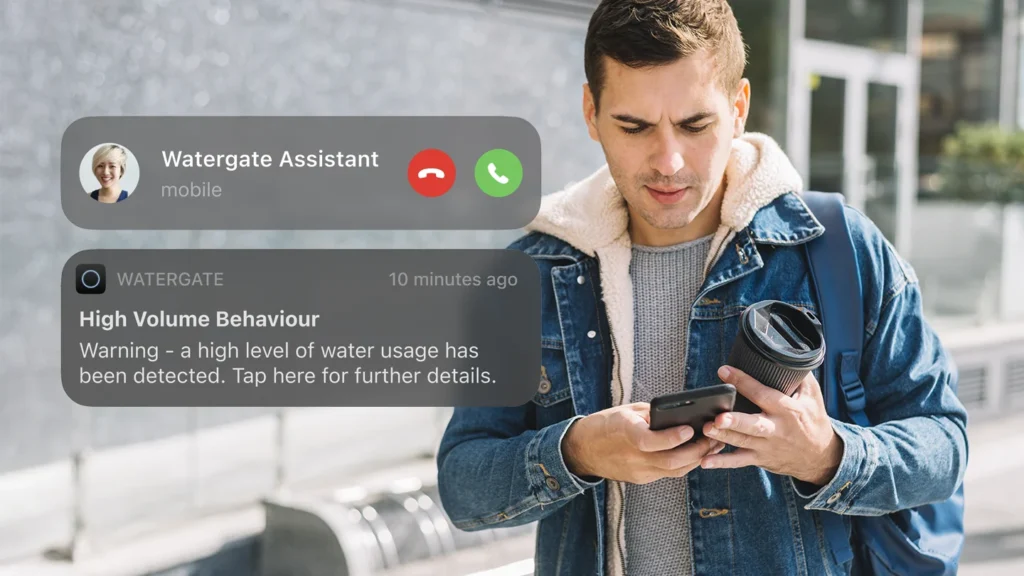Why Smart Water Leak Detection must be included in M&E specifications

This article outlines practical steps for M&E specifiers to integrate smart leak detection into their designs and includes a free specification template for anyone to use.
The overlooked threat in building design
When specifying mechanical and electrical (M&E) systems for new buildings, a host of safety, sustainability, and efficiency considerations come into play. Fire safety, electrical efficiency, ventilation, and smart lighting are now standard elements of M&E specifications. Yet, despite the growing impact of water damage and waste, smart leak detection and water management are still not considered fundamental components of modern building design. This needs to change.
The hidden costs of water leaks
Water leaks are one of the most pervasive and costly risks in buildings. According to the Association of British Insurers, leaks are the leading cause of property damage, costing the UK £1.5 billion annually. In Europe, this figure rises to £17.8 billion. More than 50% of properties will experience a water leak at some point, and the consequences extend far beyond repair costs:
–
Structural damage: Persistent leaks lead to weakened foundations, rotting materials, and expensive repairs.
–
Health risks: Damp and mould caused by undetected leaks contribute to respiratory issues and conditions like Legionella.
–
Sustainability concerns: With 30% of drinking water lost to leaks, failure to manage water effectively undermines both cost efficiency and ESG commitments.

Why has smart water management been overlooked?
Given these risks, why has the industry been slow to adopt smart water management solutions in M&E specifications? Several key barriers have played a role:
Lack of Awareness – Unlike fire or security systems, water management is often reactive rather than proactive, with many stakeholders unaware of the full extent of the problem.
Perceived Complexity – Historically, water leak detection systems have been seen as difficult to install or integrate into building management systems (BMS).
Focus on Short-Term Costs – Developers may be reluctant to add perceived ‘extra’ costs upfront, despite the long-term savings from leak prevention.
Regulatory Lag – While water conservation and efficiency regulations exist, they have yet to mandate smart leak detection in the way fire safety and energy efficiency have been addressed.
The case for smart water management now
Technology has evolved to eliminate many of the traditional barriers to smart water management. Modern leak detection systems use ultrasonic technology, AI-driven analytics, and automated shut-off valves, making them more reliable and easier to integrate than ever before. These systems can now:
–
Detect leaks with high precision in real time
–
Prevent major water damage by automatically shutting off water when necessary
–
Provide remote monitoring and management via apps and dashboards
–
Integrate seamlessly with BMS via APIs

JCoP for EoW: a regulatory shift
The urgency for incorporating smart leak detection into M&E specifications is further reinforced by the introduction of the Joint Code of Practice for Escape of Water (JCoP for EoW). This industry-wide guidance sets out clear expectations for mitigating water escape risks in construction and property management. The JCoP for EoW highlights that escape of water incidents are now considered a major risk factor, and insurers are increasingly requiring proactive water management measures. By implementing smart water monitoring systems, building designers and specifiers can ensure compliance with these evolving industry standards while also significantly reducing financial and environmental risks.
ESG, regulation, and the future of water management
The increasing focus on ESG (Environmental, Social, and Governance) commitments and corporate sustainability regulations makes it inevitable that smart water management will soon be required as part of responsible building design. Just as energy efficiency measures are now standard, water management must follow suit.
Forward-thinking M&E specifiers have an opportunity to lead the industry by proactively including smart water leak detection in their projects—protecting assets, reducing environmental impact, and adding value to developments.
A practical starting point: our free Specification Template
To support M&E specifiers in integrating smart water management into their designs, we have created a specification template that can be used as a starting point. This ensures that leak detection and water conservation measures are seamlessly incorporated into M&E plans from the outset.
Conclusion
Water damage is preventable. With the technology now available, there is no longer an excuse for excluding smart leak detection from M&E specifications. The risks and costs of ignoring water management are too high, while the benefits – cost savings, sustainability, and asset protection – are too compelling to overlook. It’s time to design buildings that are not only smart but also water-resilient.
